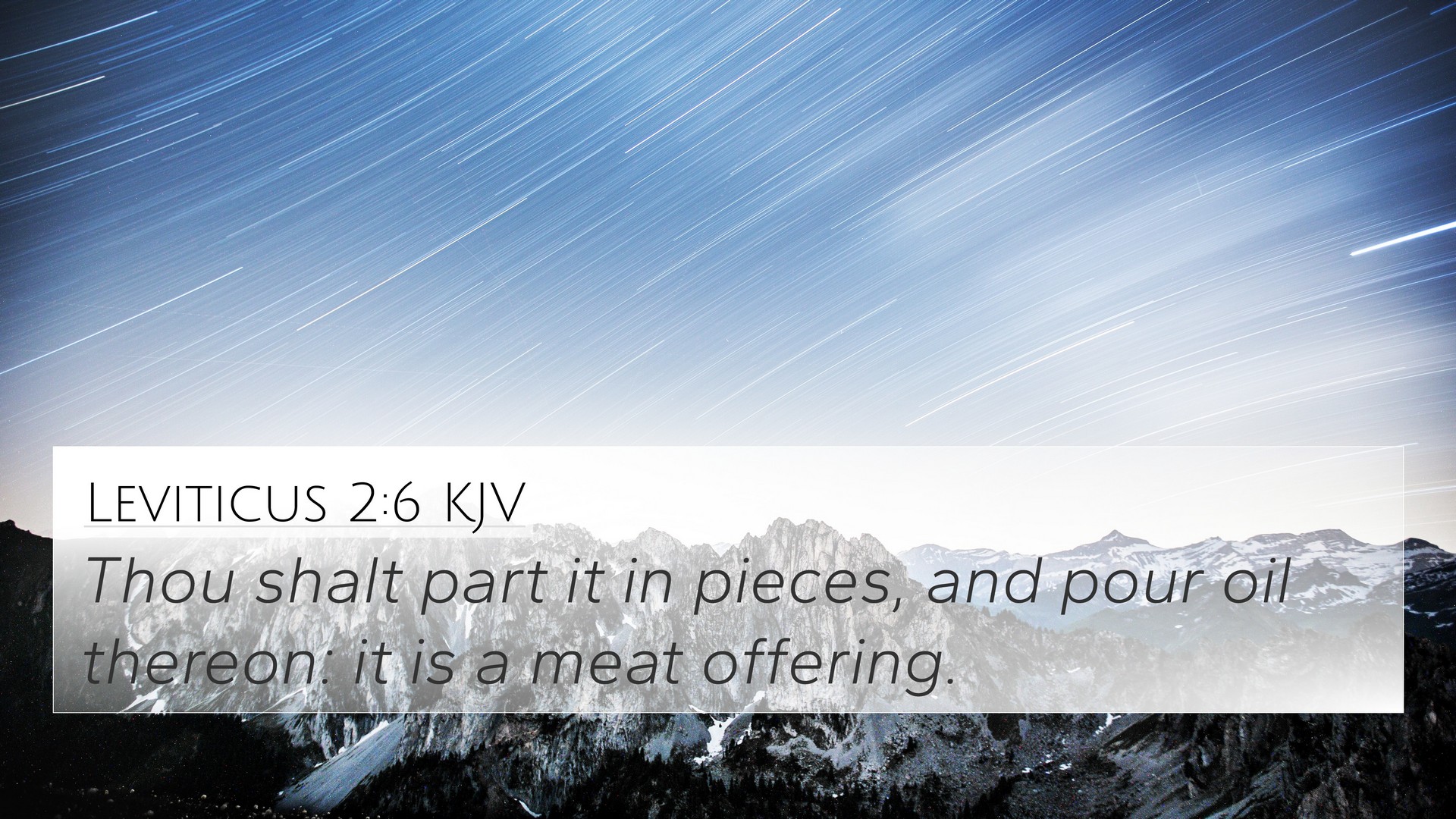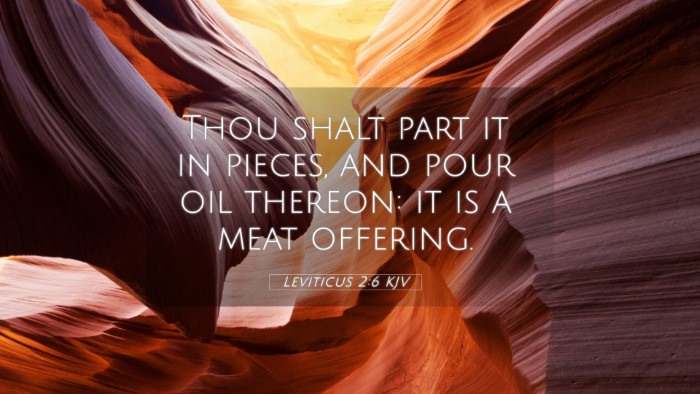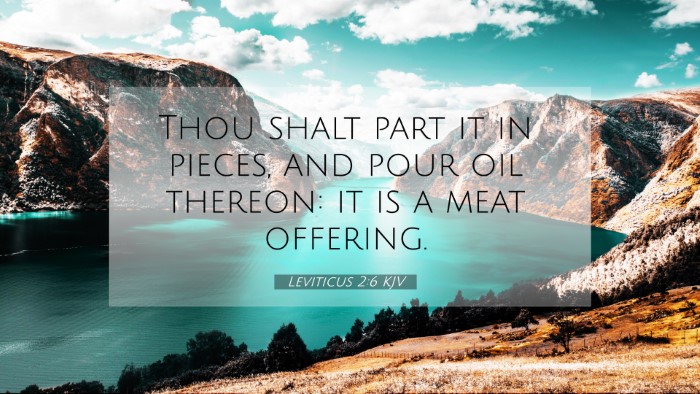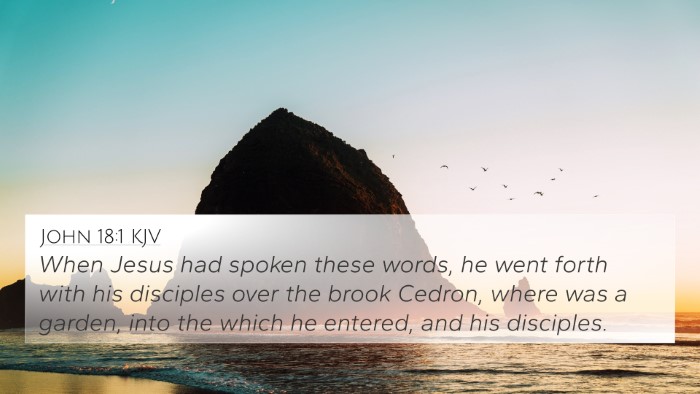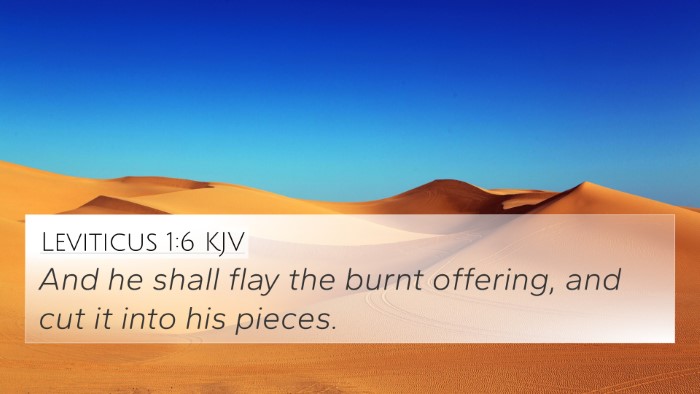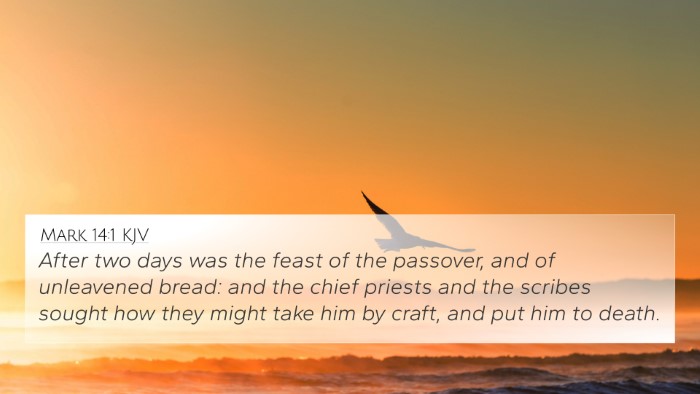Understanding Leviticus 2:6
Leviticus 2:6 states, "You shall part it in pieces and pour oil on it; it is a grain offering."
This verse pertains to the regulations surrounding grain offerings in ancient Israel, a critical aspect of worship that reflects both devotion and communal participation.
Context and Significance
The grain offering, or mincha, was one of the sacrifices mandated in the Mosaic Law.
It symbolized devotion to God and an acknowledgment of His provision and care.
The act of pouring oil over the grain offering signifies the sending of the offering upwards,
indicating that it is dedicated to the Lord, transforming it into a presentable sacrifice.
This ritual emphasizes the themes of sanctity and reverence in approaching God.
Commentary Insights
Matthew Henry
Matthew Henry notes that the grain offering showcases the gratitude of the worshiper,
offering a valuable substance as an acknowledgment of God's ongoing providence.
Even in humble offerings, there is beauty and holiness when dedicated to God.
Albert Barnes
Albert Barnes elaborates on the specific instructions given for the grain offering.
He emphasizes that the oil signifies the joy and strength infused into the offering,
which reflects the lavishness of God’s grace. This offering is not merely an act of obligation
but an expression of heartfelt worship.
Adam Clarke
Adam Clarke highlights the communal aspect of the offering,
suggesting it encouraged fellowship among the Israelites.
Such offerings served to unite the community in their shared worship and devotion to God.
Bible Cross-References
Leviticus 2:6 connects with several other scriptures that illuminate the themes of worship,
sacrifice, and community. Here are notable cross-references:
- Exodus 29:23-24: Instructions for offerings.
- Leviticus 2:1: Definition of grain offerings.
- Numbers 28:5: Daily offerings of grain.
- Matthew 5:23-24: Importance of making peace before offering.
- Hebrews 13:15: Offering of praise to God.
- 1 Corinthians 10:16: Participation in the sacrifice of Christ.
- Romans 12:1: Presenting our bodies as living sacrifices.
Thematic Connections
The themes found in Leviticus 2:6 echo throughout Scripture, connecting various aspects of worship
and sacrificial offerings. These links foster an understanding of how the offerings of the Old Testament
set the stage for New Testament teachings on sacrifice and devotion.
Comparative Analysis with New Testament Teachings
In the New Testament, parallels can be drawn between the grain offerings and the sacrificial nature of
Christ's ministry. Just as the grain offerings were meant to symbolize complete devotion,
so too is Christ’s sacrifice depicted as the ultimate offering for humanity.
Inter-Biblical Dialogue
The concepts of sacrifice and offering discussed in Leviticus reveal the overarching biblical narrative
concerning atonement, community worship, and God's requirements for holiness among His people.
Tools for Further Study
For those interested in delving deeper into Bible cross-referencing, numerous tools and resources exist:
- Bible Concordance: Useful for finding specific verses related to particular keywords.
- Bible Cross-Reference Guide: Provides systematic references between verses.
- Bible Cross-Reference System: Helps to explore connections between scriptures.
- Bible Chain References: A method to create links between various passages.
Conclusion
Leviticus 2:6 serves not only as an instruction for ancient worship practices but also as a lens
through which we can examine the heart of biblical worship and offering.
By understanding these themes, we discover a richer tapestry woven throughout Scripture,
revealing God's desire for genuine worship and communion with His people across the ages.
